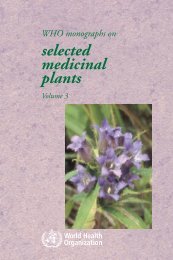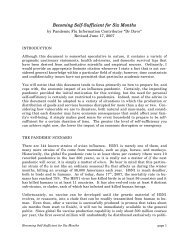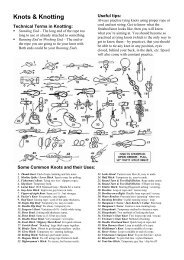Create successful ePaper yourself
Turn your PDF publications into a flip-book with our unique Google optimized e-Paper software.
COMMON EDIBLE MUSHROOMS<br />
GENUS Calvatia<br />
<strong>Edible</strong> and delicious: CALVATIA MAXIMA<br />
(Giant Puffball)<br />
This is undoubtedly one of the largest of all the fungi and at<br />
times it attains an almost unbelievable size. Schweinitz, one of the<br />
first American students of fungi, said about a hundred years ago<br />
that this puffball would reach a diameter of 3 feet. Specimens as<br />
large as a foot in diameter are common, and a specimen found in<br />
Minnesota several years ago was more than 2 feet high and<br />
weighed forty-five pounds. It has been estimated that a fairly<br />
large one would contain approximately eighteen billion spores.<br />
This plant is seldom abundant, but it is not rare; some are<br />
found every year, occasionally in groups of live to ten or even<br />
more, in meadows, pastures, or woods during summer and fall.<br />
When sliced and fried it has few equals, but like all puffballs it is<br />
good to eat only as long as it is white and solid inside. The fruit<br />
bodies are nearly spherical, or else somewhat greater in height<br />
than in diameter, white and smooth when young, becoming tan<br />
or brown at maturity, when the upper part of the wall collapses<br />
to allow the spores to escape.<br />
<strong>Edible</strong> and choice; CALVATIA CAELATA (Carved<br />
Puffball); C. CYATHIFORMIS (Vase-shaped Puffball)<br />
These two species are probably more common than C. max'nua,<br />
being found in some abundance every year in pastures and open<br />
fields (Figures 2 and 3). They look very much alike, averaging<br />
from 4 to 6 inches in diameter and slightly more than that in<br />
height, with a white, warty surface. Usually the upper part is<br />
nearly spherical but narrows downward to a thick, stem-like base.<br />
The upper part of the wall crumbles away at maturity, leaving<br />
a cup-shaped structure filled with spores. The mature spores of<br />
C. caelata are chocolate brown in color, and those of C. cyathi-<br />
88
















